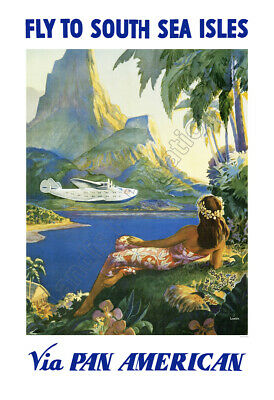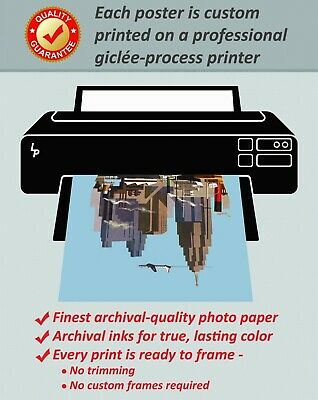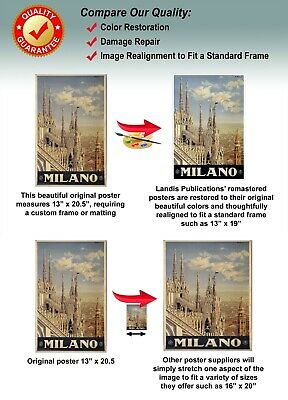-40%
Pan Am Airlines To The South Sea Isles – Late 1930’s Travel Poster
$ 10.53
- Description
- Size Guide
Description
These are simply the best posters available! You will be thrilled with the image quality, vivid colors, fine paper, and unique subjects.
OUR POSTERS ARE SIZED FOR STANDARD OFF-THE-SHELF FRAMES, WITH NO CUSTOM FRAMING REQUIRED, PROVIDING HUGE COST SAVINGS!
This beautiful reproduction poster has been re-mastered from a late 1930’s Pan Am airlines poster advertising their historic Clipper service to the Pacific Isles.
The vibrant colors and detail of this classic image have been painstakingly brought back to life to preserve a great piece of history.
The high-resolution image is printed on heavy archival photo paper, on a large-format, professional giclée process printer. The poster is shipped in a rigid cardboard tube, and is ready for framing.
The 13"x19" format is an excellent image size that looks great as a stand-alone piece of art, or as a grouped visual statement. These posters require
no cutting, trimming, or custom framing
, and a wide variety of 13"x19" frames are readily available at your local craft or hobby retailer, and online.
A great vintage print for your home, shop, or business!
HISTORY – PAN AM SPANS THE PACIFIC
Creating a transpacific route presented great challenges. Pan Am had to survey the world's longest oceanic air route, build air bases and hotels on remote Pacific islands, and find an aircraft company to design and build flying boats big and powerful enough to carry heavy payloads across the longest landless air route in the world.
Pan Am's plans for a northern Pacific air route that hugged the continental coasts fell through. The company chose a central Pacific route through Hawaii.
Captain Edwin Musick, Pan Am's famous chief pilot, led four survey flights across the Pacific in 1935 to plan the route. Meanwhile, a steamship delivered equipment, supplies, and crews to build bases and hotels on the islands along the way.
In 1936, Dorothy Kilgallen from
Girl Around the World
reported;
"Five years ago, there were neither the ships, nor the bases, nor the trained pilots and navigators and ground men. And now here it was, Pan American Airways service to the Orient."
Pan Am's route hopscotched from San Francisco to China by way of islands belonging to the United States. Back then it took a week to fly that far. Today it takes about 10 hours.
The aircraft Pan Am needed didn't exist, so it contacted aircraft manufacturers and settled on the Glenn L. Martin Company of Baltimore to design and build them. The company produced the three largest air transports of their time: The Martin M-130 clippers.
She was a beauty... Practically every comfort of a modern hotel was provided. If the progress of the previous few years continued, airplanes would have swimming pools before long. Four powerful engines gave it the power of a locomotive, enough speed to reach Hawaii in less than 20 hours, and enough range to have hundreds of miles to spare.
On November 22, 1935, Ed Musick eased the China Clipper up from San Francisco Bay, flew beneath the not-yet-finished cross-bay bridge, and headed west through the Golden Gate. For Hawaii, the dawn of a new era was 21 hours away.
Tens of thousands watched below, and millions listened on the radio, as the China Clipper overflew the rising towers of the Golden Gate Bridge and headed for Hawaii.
At the end of its six-day, 8,210-mile trip, the China Clipper reached Manila, where a quarter-million Filipinos and a flotilla of boats greeted it.
A year after it began transpacific service, Pan Am flew the first scheduled passenger flight. It offered for sale seven tickets for the October 21, 1936, flight on the Hawaii Clipper. Over 1,000 people applied for them.
The 60-hour flight on the Hawaii Clipper from San Francisco to Manila took six days with four overnight stops. The long flight to Hawaii was the only overnight hop.












